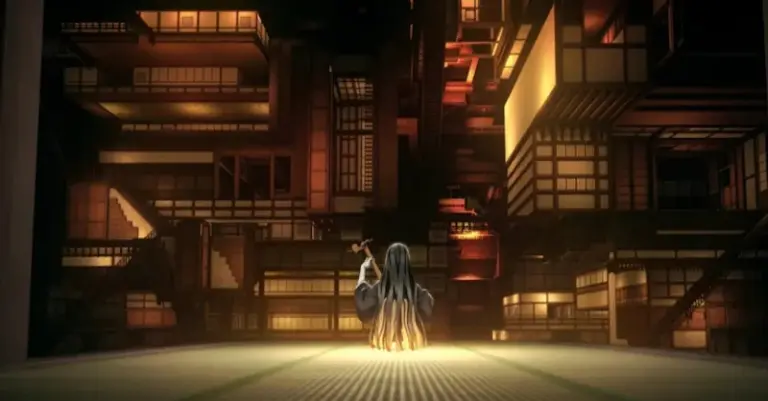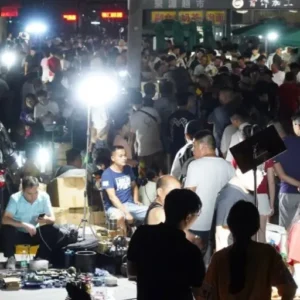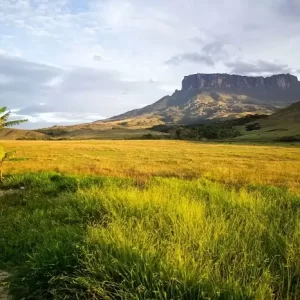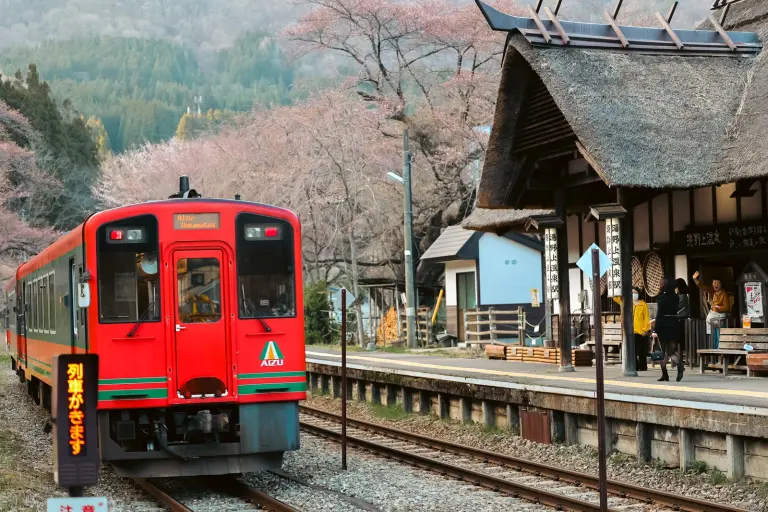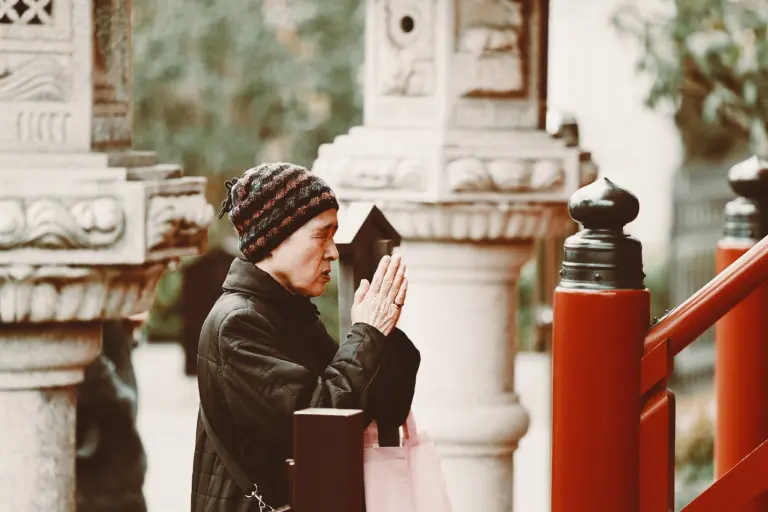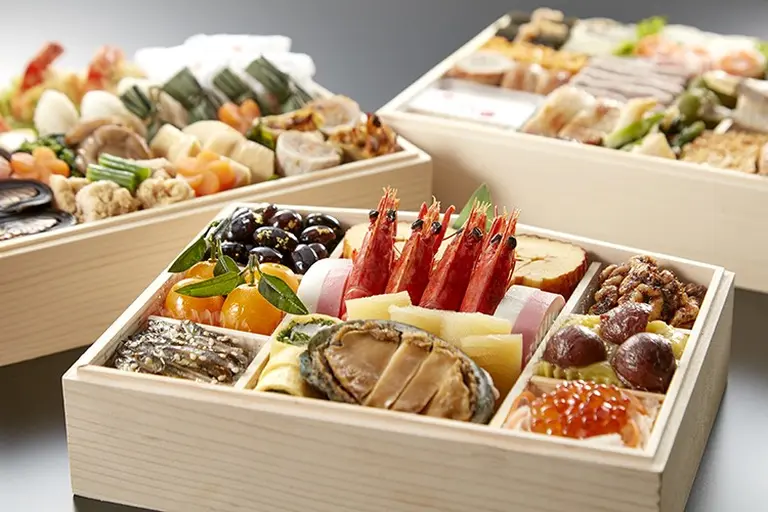In the eastern reaches of Portugal, perched atop a rugged mountain near the Spanish border, lies Monsanto—a village so surreal, so dramatically carved into stone, that it feels like a fantasy world brought to life.
A Stone-Carved Legacy
Monsanto isn’t just beautiful—it’s one of the most remarkably preserved historic villages in Portugal. It was once named the “Most Portuguese Village in Portugal” (1938), a title that reflects not only its architectural uniqueness but also its deep connection to the nation’s roots.
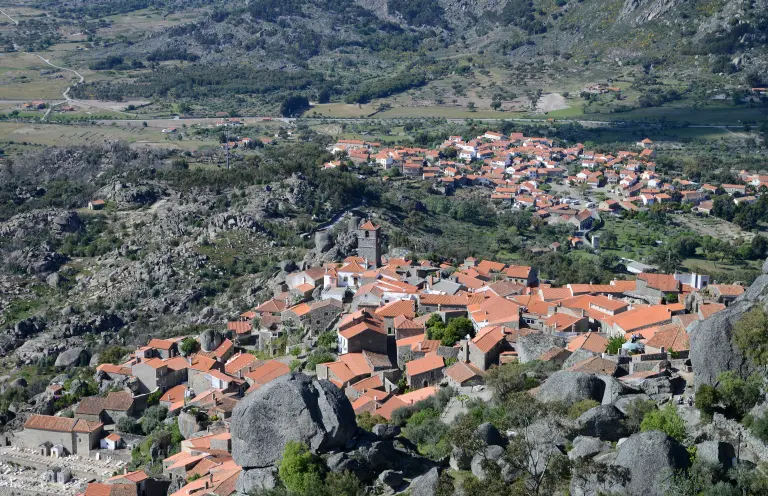
The granite boulders—some weighing over 200 tons—have shaped more than just the landscape. They’ve shaped lives. Instead of removing them, the villagers embraced the rock as part of their homes. Some dwellings are completely embedded into stone, with massive boulders forming walls, ceilings, or even entire facades. Walking through Monsanto is like wandering through an open-air museum sculpted by nature and refined by human resilience.
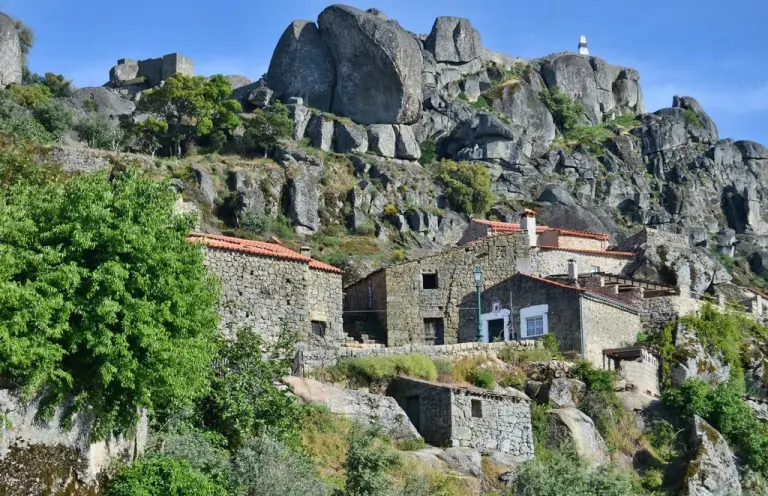
>> Discover Bukchon Hanok village – Korea’s most beautiful traditional neighborhood
What to Do in Monsanto
1. Explore the Castle of Monsanto (Castelo de Monsanto)
A short hike from the village center takes you to the ruined medieval castle that once protected Monsanto. From here, the 360-degree views of the countryside are breathtaking, especially at sunset.
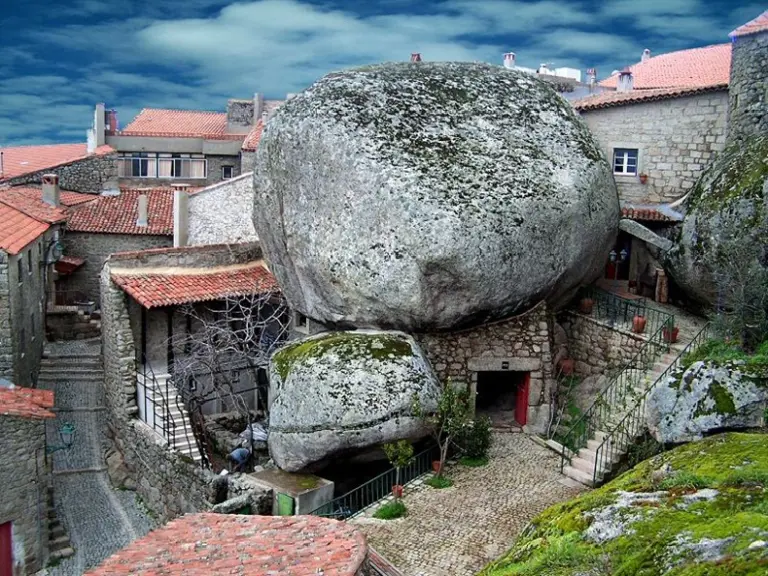
2. Wander the Cobbled Streets
Get lost (in the best way) in the village’s winding stone lanes, where every corner tells a story. You’ll find ancient fountains, centuries-old chapels, and charming doorways framed by flowering vines.
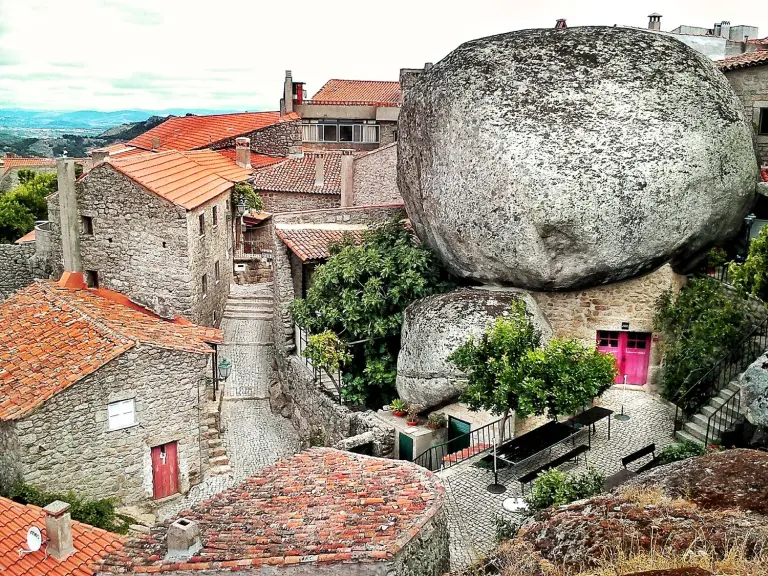
>> Masuleh: A Unique Iranian Village Where Roofs Serve as Pathways
3. Visit the Capela de São Miguel
This 12th-century chapel near the castle ruins is a must-see. Surrounded by mysterious tombs carved directly into the stone, it’s one of the most atmospheric spots in Monsanto.
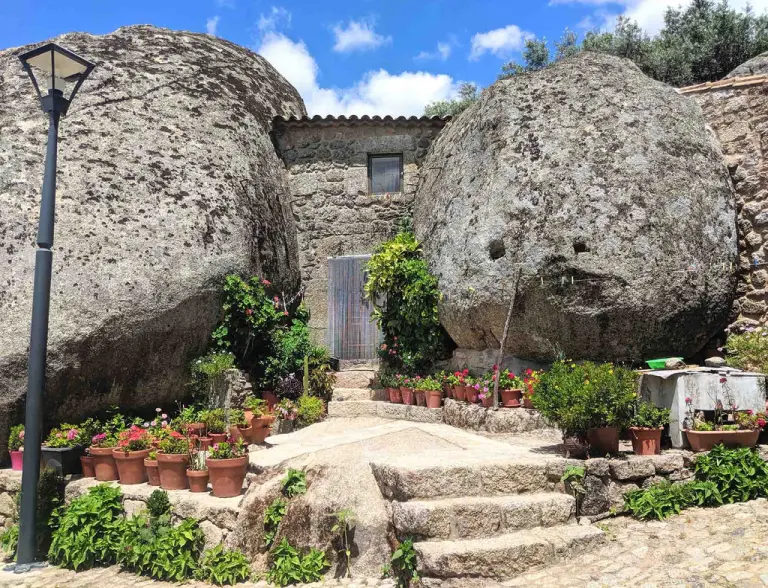
4. Stay Overnight in a Stone House
Many traditional homes have been transformed into cozy guesthouses or boutique hotels, letting visitors experience what it’s like to sleep under a boulder—safely, of course.
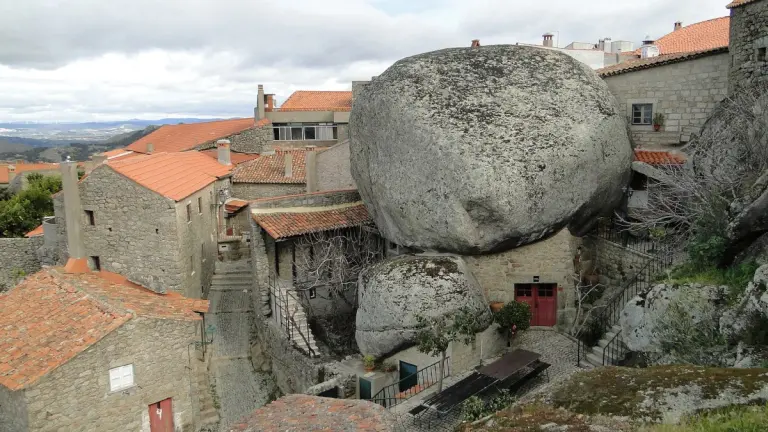 >> Kayabuki no Sato – A Picturesque Fairy Tale Village in Kyoto
>> Kayabuki no Sato – A Picturesque Fairy Tale Village in Kyoto
5. Taste Local Delights
Try local specialties like queijo de cabra (goat cheese), enchidos (smoked sausages), and regional wines. Some eateries offer traditional meals with panoramic views of the valley below.
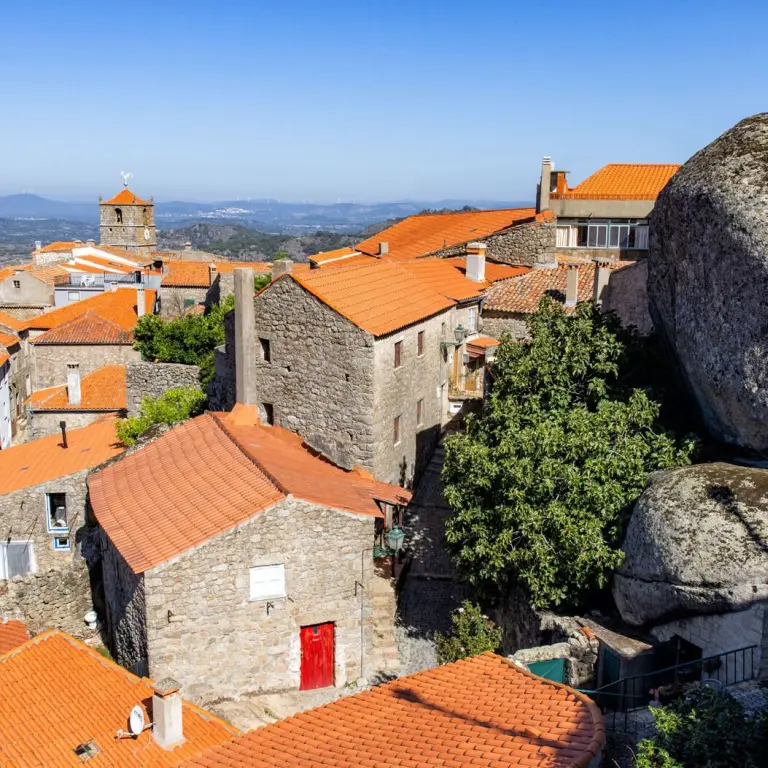
Tips for Travelers
- Best time to visit: Spring (April–June) or early autumn (September–October) offer mild weather, blooming landscapes, and fewer crowds.
- Getting there: Monsanto is about a 3-hour drive from Lisbon. You can rent a car or take a train to nearby Castelo Branco and continue by taxi or local bus.
- Stay connected: The village is small, but some guesthouses offer good Wi-Fi, allowing for remote work or sharing your travel moments online.
- Bring good shoes: The village streets are steep and cobbled—wear sturdy shoes for walking.
- Respect local life: Though a tourist spot, Monsanto is still a living village. Smile at the residents, buy local products, and tread gently.
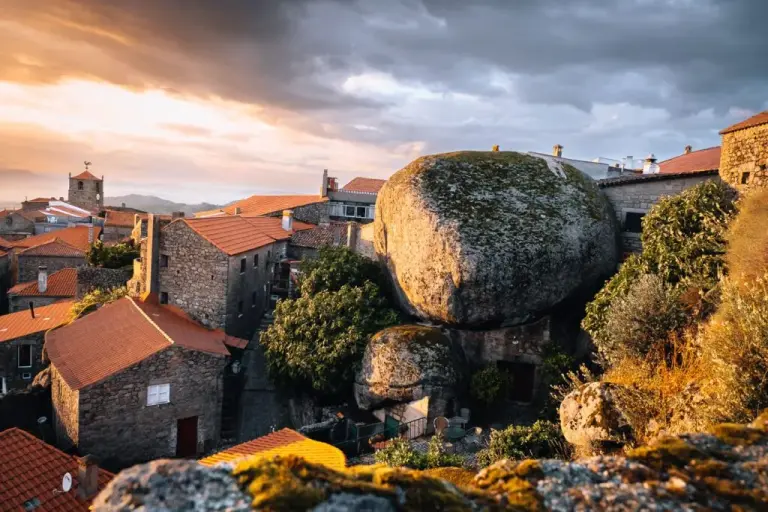
>> Devils Marbles: A stunning natural and spiritual wonder of Australia
Why Monsanto Is More Than Just a Quick Visit
Monsanto is not a place to rush through. Its beauty lies in the details: the quiet morning mist hanging over the stones, the golden glow of sunset on the ancient rooftops, the echo of your footsteps through timeless alleys. It invites you to slow down, breathe, and reconnect with something ancient and enduring.
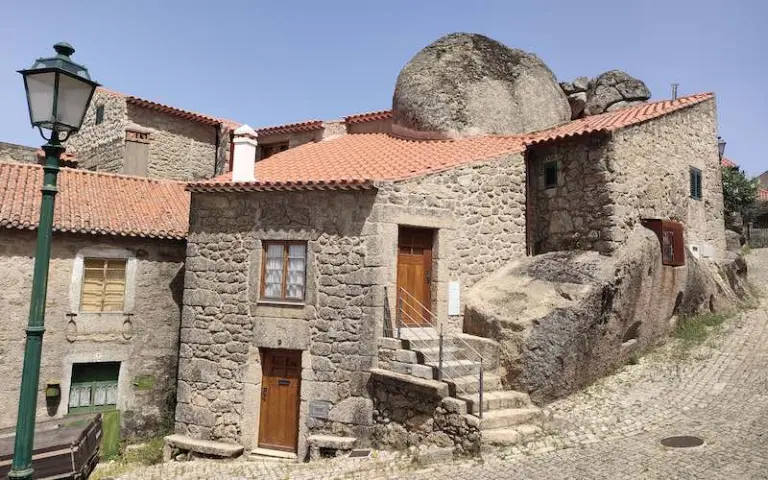
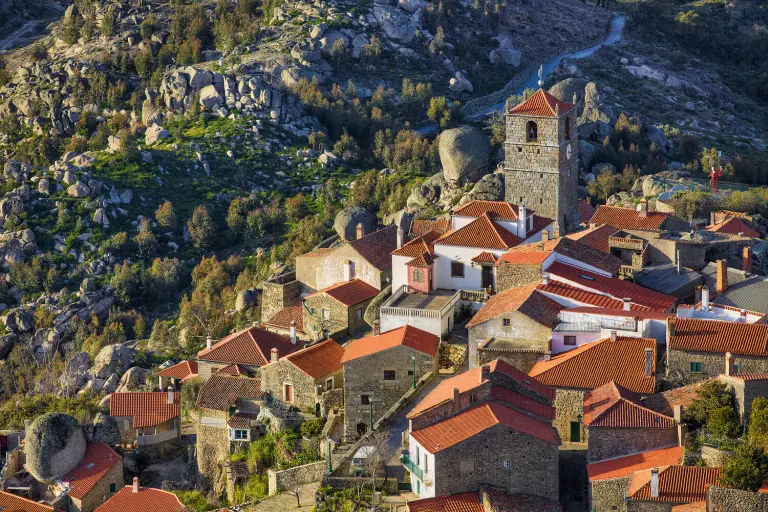
>> A 3,400 year old palace rises from the water – The hidden legacy of ancient Iraq
FAQ
What is Monsanto, and where is it located?
Monsanto is a tiny, historic village in central Portugal, situated near the Spanish border in the municipality of Idanha-a-Nova. Perched on the slope of a granite hill, Monsanto is often called “the most Portuguese village in Portugal” — a title officially awarded in 1938 — and is known for its houses built between, beneath, and even into giant granite boulders.
Why is Monsanto famous?
Monsanto is world-famous for its incredible integration with nature, particularly the way its buildings are tucked under, wedged between, or built entirely from massive granite rocks. Walking through its cobbled streets feels like stepping into a fantasy world. The unique architecture combined with its well-preserved medieval character makes it one of the most visually captivating villages in Europe.
How old is Monsanto?
The roots of Monsanto date back to prehistoric times, with archaeological traces of early human settlements. The village gained prominence during the Middle Ages, especially after King Afonso I gifted it to the Knights Templar in the 12th century. Its history spans thousands of years, and that ancient atmosphere is still very much alive today.
What does “houses beneath boulders” really mean?
Literally! In Monsanto, entire homes, shops, and chapels are nestled under or between giant granite boulders, some of which weigh hundreds of tons. Instead of moving the rocks, locals built around them, letting the natural formations become roofs, walls, or even furniture. One of the most iconic houses is known as Casa de Uma Só Telha – “The House with One Roof Tile,” where the roof is a massive single stone.
What can visitors do in Monsanto?
Visitors can:
- Wander the narrow medieval streets paved in stone.
- Visit the Castle of Monsanto, a ruined fortress with panoramic views over the surrounding plains.
- Explore chapels, wells, and Romanesque churches, many of which are carved into or built alongside boulders.
- Learn about the village’s heritage at the Interpretation Center.
- Enjoy local delicacies in traditional taverns with stone walls and fire-lit interiors.
What is the best time to visit Monsanto?
Monsanto can be visited year-round, but the best times are spring (April–June) and autumn (September–October) when the weather is pleasant, and the countryside is at its most colorful. Summers can be hot, especially because of the reflective granite, while winters are quiet and atmospheric.
Is Monsanto touristy?
Surprisingly, Monsanto remains relatively uncrowded, especially compared to other European medieval towns. Its remote location and limited accommodations keep mass tourism at bay, preserving its tranquil and authentic vibe.
How do I get to Monsanto?
Monsanto is best reached by car. It’s about:
- 3 hours from Lisbon
- 2.5 hours from Porto
Public transport is limited, though some buses go to nearby Idanha-a-Nova, from where a taxi can take you up to the village.
Can I stay overnight in Monsanto?
Yes! There are several charming guesthouses and rural stays, many converted from old stone homes. Staying overnight allows visitors to truly absorb the serenity of the village, especially after the day-trippers leave.
What kind of food is typical in Monsanto?
Local cuisine includes:
- Goat cheese, olives, and cured meats.
- “Maranho”, a traditional dish of goat meat, rice, mint, and spices wrapped in a stomach lining.
- Alheira sausages, hearty stews, and fresh breads baked in old stone ovens.
Everything is served with authentic rustic charm and often with local wine.
Is Monsanto a good place for photography?
Absolutely. Monsanto is a dream location for photographers. With its surreal landscape, golden hour lighting on stone alleys, and the dramatic contrast between nature and architecture, every corner is postcard-perfect.
What makes Monsanto truly special?
Monsanto’s magic lies in its unparalleled harmony between human construction and natural landscape. It feels untouched by modernity — a peaceful, slow-paced village where time seems to have paused centuries ago, and the boulders continue to watch silently over its winding paths and enduring spirit.
>> Apennine Colossus: A unique renaissance marvel of sculpture and engineering in Florence
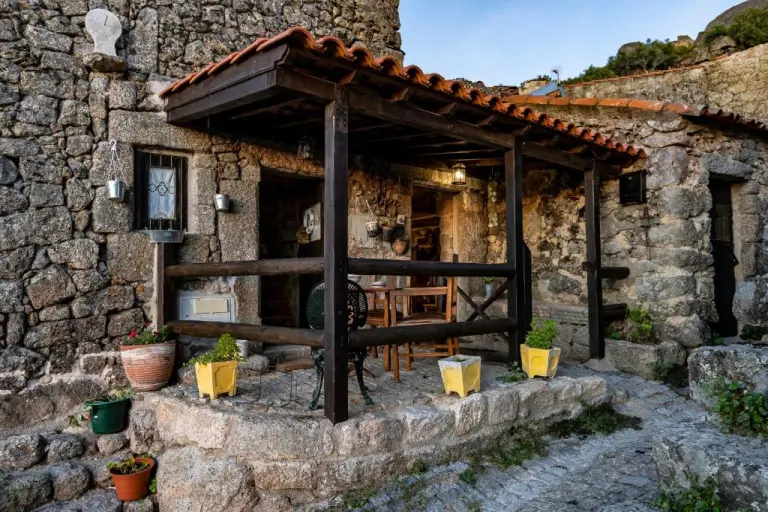
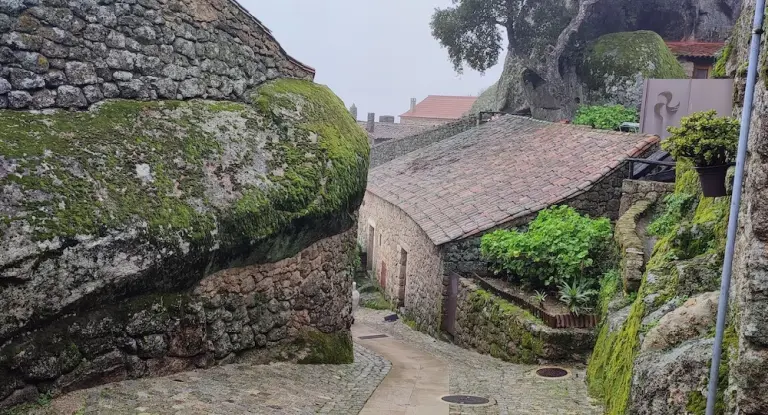
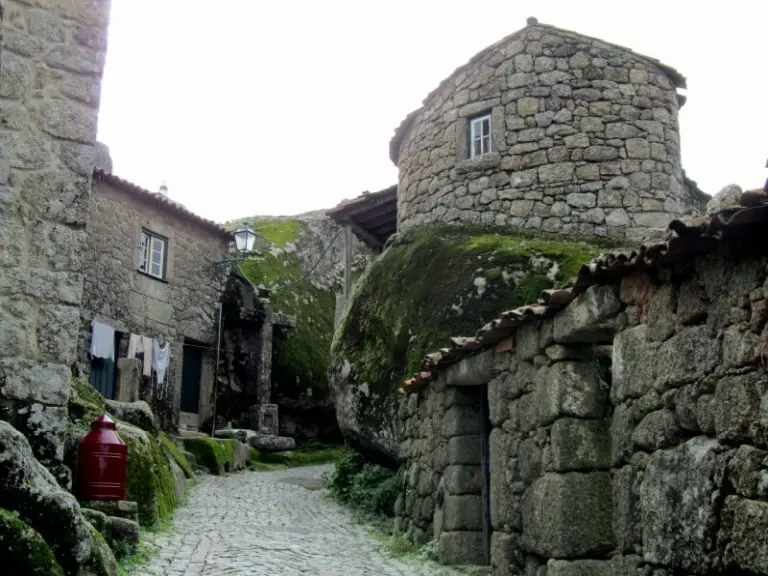
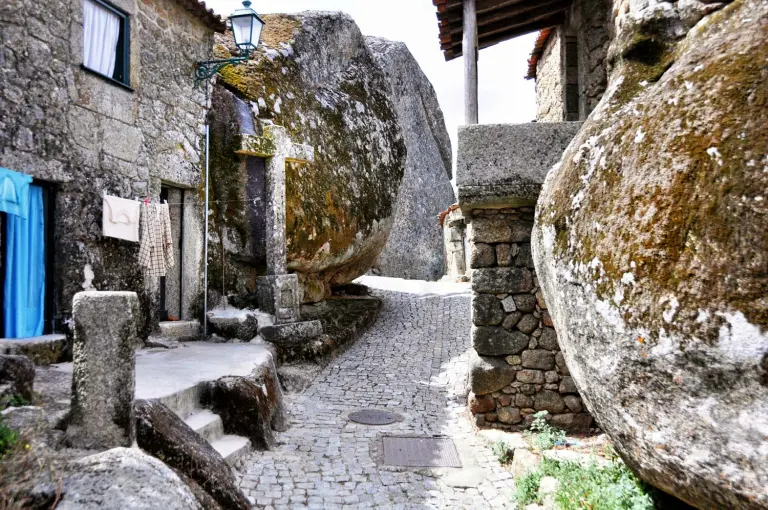
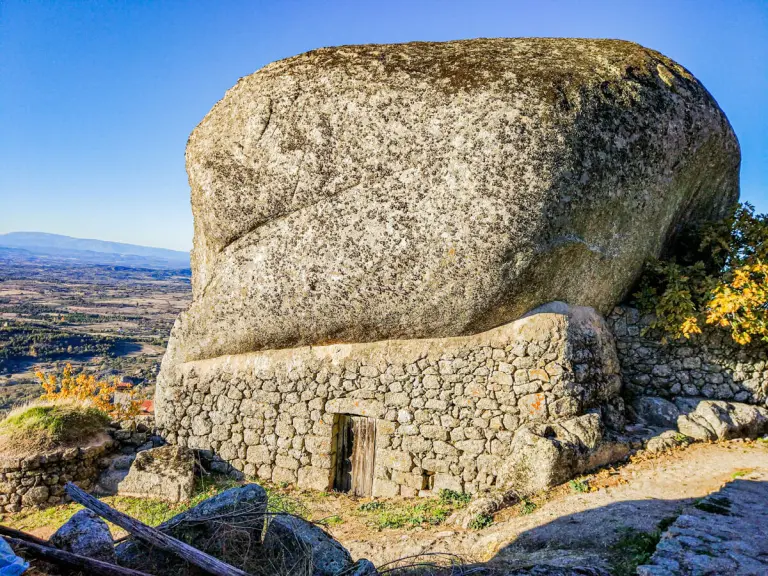
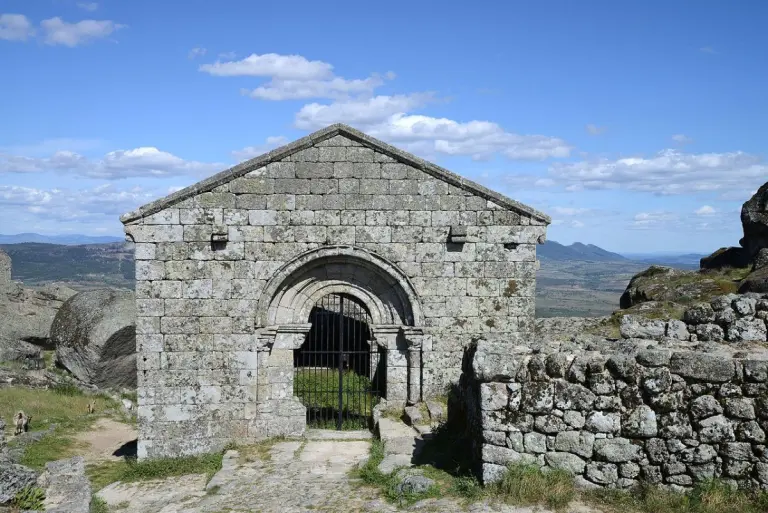
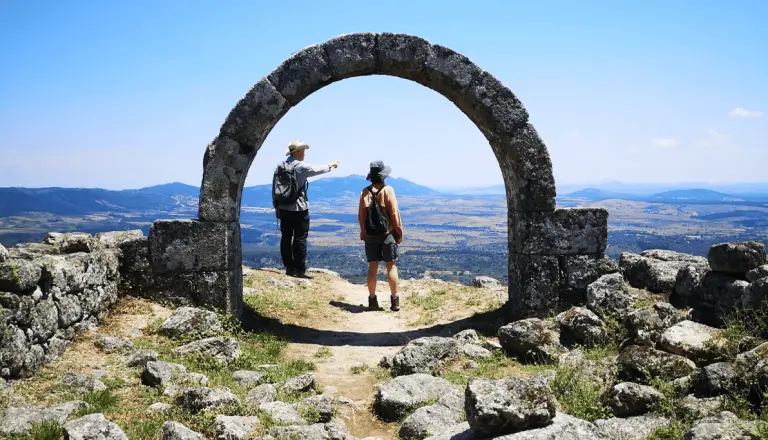
In a world filled with flashy cities and overrun tourist traps, Monsanto offers something rare—authenticity, serenity, and awe. Come not just to see the rocks, but to hear their stories. To feel the weight of history pressing gently on your shoulders. To understand what it means to live in harmony with nature.
>> Fujian Tulou – the first ‘apartment’ model in the world
Stay a little longer. Sleep beneath the stones. And let Monsanto show you the quiet magic that still exists in this world.

